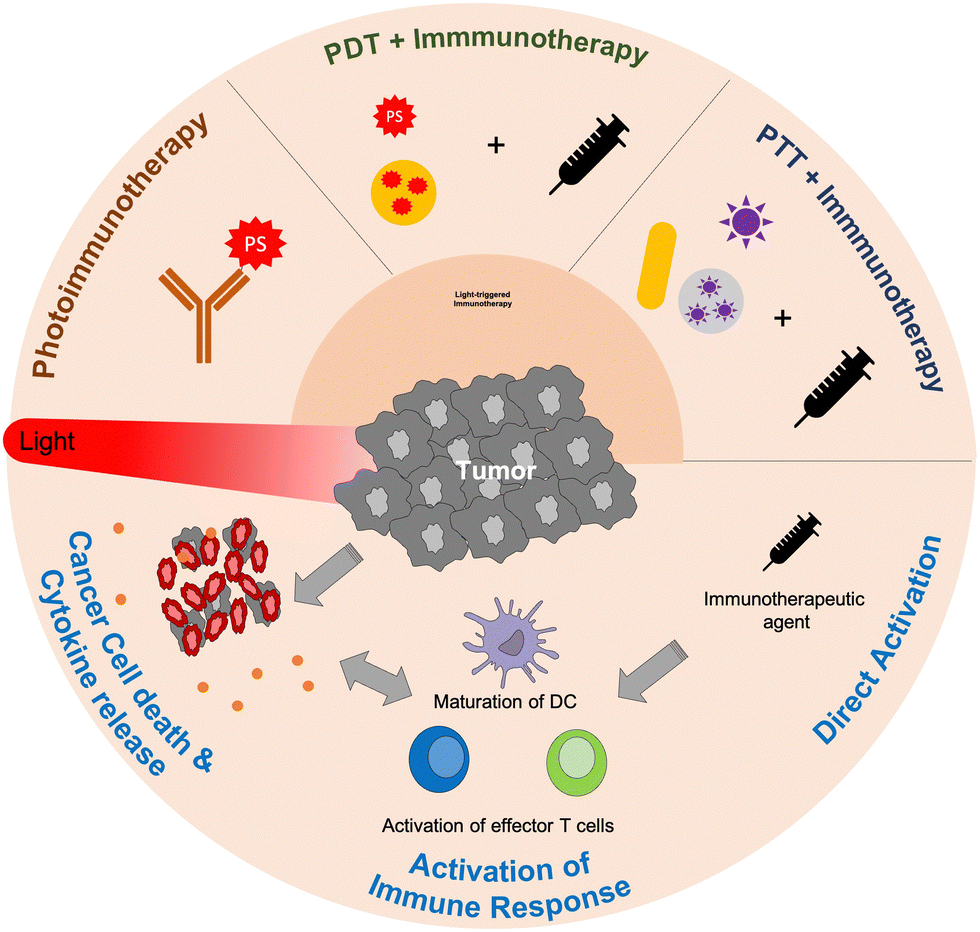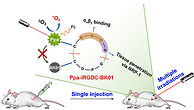top of page
Key Publications
Review
Oct, 2025
Biotechnology Advances
Volume: 83
This review focuses on various architectures of NA-loaded HDL NPs, their mechanisms for NA cellular uptake, and their therapeutic efficacy in vivo. It comprehensively covers the latest nanocarriers for NA delivery that contain HDL's apolipoproteins (ApoA-I, ApoE) or their mimetic peptides, which define the unique functional and targeting capabilities of HDL NPs.

Review
September, 2025
Coordination Chemistry Reviews
Volume: 539
This review surveys the design principles, stimuli-responsive mechanisms, and theranostic applications of peptide-harnessed supramolecular and hybrid nanomaterials, highlighting how their adaptable secondary structures enable precise, integrated diagnosis-therapy (“theranostics”) and outlining future development directions.

Research
August, 2025
Biosensors and Bioelectronics
Volume: 281
Carboxyl-enriched polystyrene nanobeads that preferentially bind antibodies via their Fc region and carry an embedded Pd catalyst provide a solvent-triggered, catalytically amplified immunoassay platform that delivers ultrasensitive, long-term biomarker detection without complex surface modifications.

Research
July, 2025
Advanced Materials
Volume: 37
Pd-decorated gold nanobipyramids catalyze a photo-induced plasmon-electron-transfer (PiPET) bioorthogonal cleavage of an allyl-carbamate-caged methylene-blue pro-photosensitizer, enabling spatiotemporally controlled activation and potent, tumor-localized phototherapy.

Research
May, 2025
Advanced Materials
Volume: 37
D Lee, HJ Jeon, D Jang, D Lee, S Kim, M Han, SJ Jung, J Lee, J Choi, DH Kim, DJ Ahn…
Genetically engineered Salmonella that secrete streptavidin selectively colonize tumors and, after a single injection of biotin-fluorophore, provide deep, long-lasting fluorescence with a tumor-to-background ratio ≈ 15, enabling precise three-dimensional visualization of tumor margins for image-guided surgery without repeated contrast dosing.

Research
May, 2025
Advanced Healthcare Materials
Volume: 14
Room-temperature synthesis yields MOF-supported single-atom Au and Fe nanocatalysts that work in cascade to generate H₂O₂ and •OH, collapse tumour redox homeostasis and achieve potent multimodal cancer therapy in vitro and in vivo

Research
May, 2025
Advanced Sensor Research
Volume: 4(7)
H Ji, YF Florez‐Villabona, Y Kim, Y Kim, Y Kim, S Baik, YH Seo, S Kim
The sulfonate-functionalized, water-soluble conjugated polyelectrolyte PQx-Ph selectively co-assembles with specific antibiotics, eliciting fluorescence quenching (kanamycin) or enhancement (erythromycin) via distinct AIE/TICT mechanisms, and thus affords nanomolar-to-micromolar, matrix-tolerant antibiotic sensing.

Research
April, 2025
Advanced Healthcare Materials
Volume: 14, Issue: 11
Catechin-condensed nanoparticles synthesized via mild hydrothermal reaction preferentially accumulate in inflamed tissue, efficiently scavenge ROS, and thereby alleviate systemic inflammation, offering a biocompatible polyphenol-based nanotherapeutic for ROS-driven inflammatory diseases.

Research
March, 2025
Nature Communications
Volume: 16
Enzyme-like chiral gold–palladium nanoparticles that mimic glucose-oxidase and peroxidase activities can be sequentially activated by right- then left-handed circularly polarized light, creating an optimally acidic micro-environment that boosts cascade ROS production and yields superior anti-tumor efficacy in cell and mouse models.

Research
April, 2024
Bioactive Materials
Volume: 34, P: 164-180
Near-infrared-upconverted UV light inflates an azobenzene–RGD supramolecular assembly to widen ligand nanospacing, while visible light reverses the process, enabling reversible photonic control over stem-cell adhesion, mechanosensing and differentiation both in vitro and in vivo.

Research
March, 2024
Acta Pharmaceutica Sinica B
Volume: 14, Issue: 3
Photo-induced cross-linked liposomes bearing an anti-PD-L1 peptide (“ICB-LPs”) multivalently bind PD-L1, traffic it to lysosomes for durable degradation, and thereby amplify T-cell-mediated antitumor immunity, offering an effective nanoplatform for immune-checkpoint blockade.

Review
January, 2024
Journal of Materials Chemistry B
Volume: 12, P: 2650 – 2669
This review surveys recent progress in light-triggered phototherapies—including photodynamic, photothermal and photoimmunotherapy—integrated with cancer immunotherapy, detailing the underlying immune mechanisms, therapeutic achievements and remaining challenges for photo-induced cancer treatment.

Research
November, 2023
Sensors and Actuators B: Chemical
Volume: 394
A deproteinization-assisted electrochemiluminescence (ECL) chemosensor built around a “turn-on” Ir(III)-DNP probe delivers selective, highly sensitive detection of hydrogen sulfide and thus enables reliable monitoring of disease-related H₂S fluctuations in the blood of a type-1-diabetic rat model.

Research
2023
Journal of Materials Chemistry B
Volume: 11, P: 7344 – 7352
A homoleptic Au(I) carbene complex functions as a rapid, fluorescence “turn-on” probe for glutathione via ligand-displacement, enabling sensitive discrimination of intracellular GSH levels within seconds.

Research
September, 2023
ACS Applied Materials & Interfaces
Volume: 15, Issue: 37
A silica-particle platform that co-loads conjugated polymer dots (as photosensitizers) on its surface and encapsulates Prussian blue nanocubes inside couples photodynamic and photothermal effects, yielding markedly enhanced anticancer therapy.

Review
August, 2023
Advanced Drug Delivery Reviews
Volume:1 99

This review charts recent advances in mRNA cancer immunotherapy—spanning nucleotide and cap modifications, sequence engineering, and state-of-the-art delivery systems—to illustrate how these innovations enhance stability, translation, targeting, and immune activation while outlining remaining translational hurdles.
Research
December, 2022
Journal of Controlled Release
Volume: 352, P: 25-34
Dual-targeted administration of 5-aminolevulinic acid (to accumulate PpIX) and ^64Cu-DOTA-trastuzumab (as an in-situ Cerenkov radiator) produces tumor-confined Cerenkov-light energy transfer, enabling external-light-free, high-precision photodynamic therapy with marked antitumor efficacy in HER2-positive cancer models.

Research
October, 2022
Advanced Materials
Volume: 34, Issue: 29
Azobenzene-stacked microgels, photo-swollen by upconversion-mediated near-infrared light and deswollen by visible light, dynamically expose or hide RGD ligands to switch macrophages between pro-regenerative and pro-inflammatory phenotypes, offering a biocompatible, photoswitchable platform for immune modulation.

Research
June, 2022
Applied materials today
Volume: 27, P: 101472
D Jang, S Yu, K Chung, J Yoo, FM Mota, J Wang...
Jang et al. report a low-temperature strategy to coat thermally fragile gold nanobipyramids with anatase TiO₂, preserving plasmonic morphology while enabling combined near-infrared photothermal heating and photocatalytic ROS generation for synergistic cancer therapy.

Research
March, 2022
Advanced Functional Materials
Volume: 32, Issue: 52
A tumoral-pH–responsive micellar precursor (Mito-SA) disassembles in acidic cancer microenvironments to liberate a mitochondria-targeting monomer (Mito-FF) that self-assembles inside mitochondria and triggers selective cancer cell death, demonstrating a disassembly-to-assembly strategy for supramolecular chemotherapy.

Research
March, 2022
Small
Volume: 18, Issue: 22
A multifunctional afterglow nanosensor (MANS) combines an Ir-complex and rubrene to deliver superoxide-triggered “off-to-on” afterglow imaging, enabling high-contrast, autofluorescence-free detection of cisplatin-induced kidney injury in mice.

Research
October, 2021
ACS nano
Volume: 16, P: 2760–2773
K Jeong, D Kim, HJ Kim, YD Lee, J Yoo, D Jang…
Kim et al. develop a photoechogenic nanohybrid system enabling ultrasound-triggered upconversion and photodynamic activation, offering a dual-modal platform for image-guided sonotheranostics.

Research
November, 2020
ACS nano
Volume: 14, P: 13249–13262
HJ Cho, SJ Park, WH Jung, Y Cho, DJ Ahn, YS Lee…
Using a peptide-based depot system, Kim et al. demonstrate autonomous and rechargeable photodynamic tumor therapy, achieving repeated therapeutic efficacy through in situ photosensitizer regeneration.

Research
July, 2019
Biomaterials
Volume: 209, P: 126-137
E Choi, J Lee, IC Kwon, DK Lim, S Kim
This study presents a biocompatible and efficient siRNA delivery system based on a calcium-mediated interaction between phosphate and silicate, enabling amine-free, non-toxic gene silencing.

bottom of page

